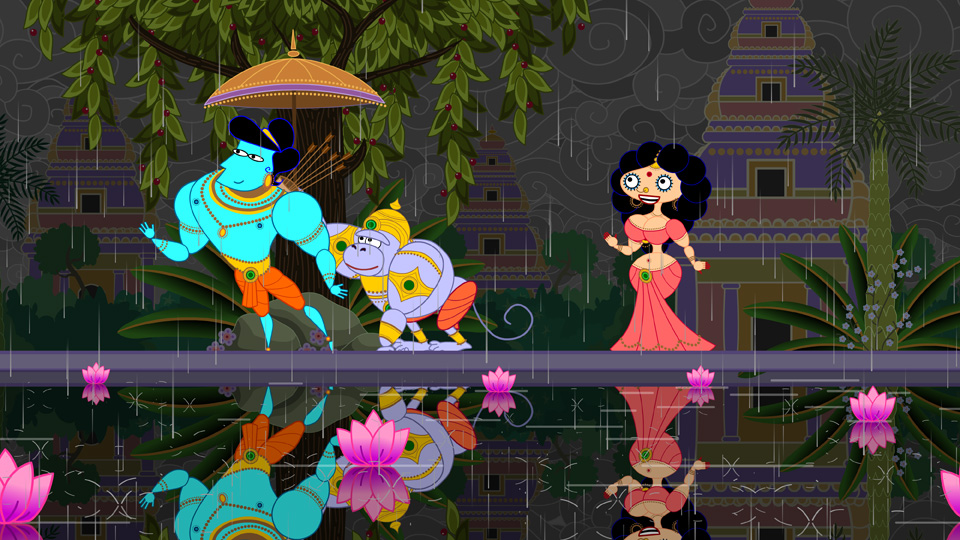The Weather and Everyone's Health
Sunday, October 05, 2008
Thoughts on reading Narayan's Ramayan
Since Diwali is coming up, I went to the library to find an English Ramayan to read. My criteria were: in English, not too long, not too scholarly (emphasis on narrative), preferably by an Indian author/translator, and more-or-less faithful to the canon (i.e. no embellishments, and subtractions only for the sake of length and clarity). The best thing I found that met these criteria (and wasn't away in the book depository) was this:

R.K. Narayan, 1971, Penguin Classics (a newer edition is available, too, with a neat cover).
It is pretty short and reads easily with an emphasis on telling the story (i.e. moving the narrative along). There are occasional notes from the author ("here the poet revels in the details of the procession...") but no footnotes or other scholarly formalities. Rather than being based on Valimiki's (400 BCE) version, it is adapted from the retelling of the 11th century (CE/AD) Tamil poet Kumban. Fair enough, I suppose. As far as I can tell (which is admittedly not very far) the story is the same.
Why read the Ramayan, anyway?
- It's just a great story, and works on several levels. Family drama and emotions that are understandable across time and cultures, a great adventure story, fascinating mythological figures on par with any in the Greco-Roman stories, difficult choices for noble heroes, etc.
- Because it's such a great story, it has inspired all kinds of art (paintings, sculpture, decorative arts, music, dance) for centuries all over South and South East Asia. Knowing the story gives one a background to better appreciate and understand such art and allusions--just as knowing the story of Romulus and Remus explains why there are all those bizarre wolf-suckling twins carved across Europe.
- It may contain wisdom that is relevant even today. However, I'm not sure how much of this comes across in Narayan's version because it is shortened--makes sense given the audience he was aiming for. For example, on the eve of his scheduled coronation, Ram is given extensive advice by his father, King Dasarath. After a few of Dasarath's sentences, Narayan clips it, saying "He went on thus for some time and then ended the meeting." I am rather curious to see more of what his advice was. This is as if someone telling the story of Hamlet said only "And then Polonius gave Hamlet some advice.
Someday I would love to do a Humanist reading of the Ramayan. I think this kind of re-interpretation/re-understanding happens to Judeo-Christian texts and stories in UU churches a lot. So far, I think one promising angle is Manthara. If we understand her, rather than as a character, as the internal voice of greed and fear, then suddenly the story goes from being a mythological soap opera to being a reminder of the dangerous smallness the human spirit can succumb to when threatened. How else could the situation have been dealt with? What can we do when we hear our inner Manthara whispering to us?
I would also be interested in exploring what/how "duty" can be understood in a modern, humanistic context. No ideas yet on that one.
Finally, one of the things that can be problematic when reading the Ramayan (as with any ancient text, I suppose) is the view and role of women. It is hard to know how much of the patriarchical stuff was interpolated in later and how much is original. It's certainly not as bad as it could be in that many female characters are strong, have agency, can be either "good" or "evil" or even both/transition. But pretty much across the board the female characters in the story get the short end of the stick.
But fortunately, the Ramayan is still inspiring artistic interpretations, and the latest that I know of is cartoonist Nina Paley's retelling from Sita's point-of-view: Sita Sings the Blues. I have seen a short clip of this a few years ago and look forward to seeing the whole thing (it was hard to see Ram as a "dumb jock," but I will reserve further comment until I can see the complete work).

